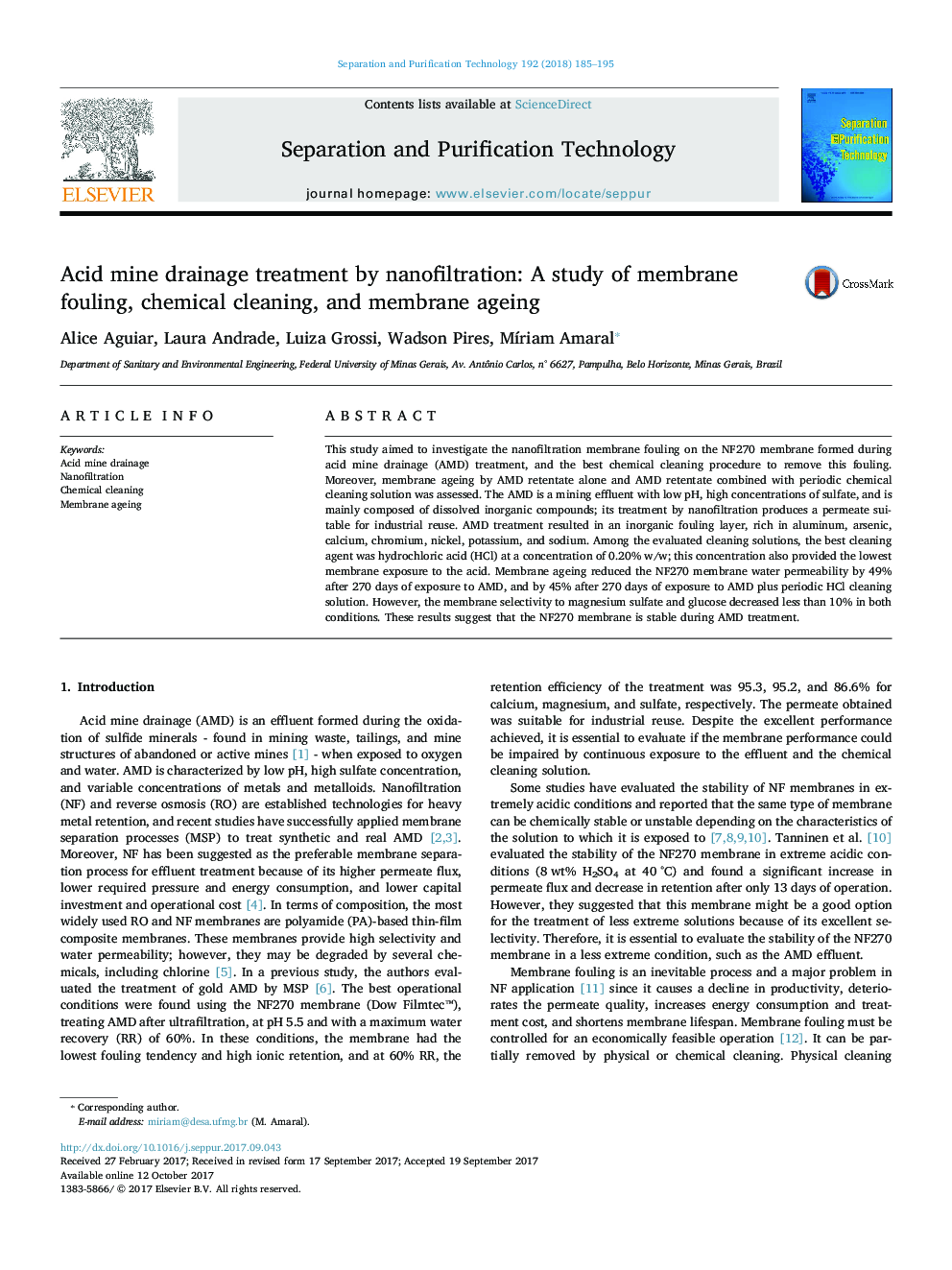| Article ID | Journal | Published Year | Pages | File Type |
|---|---|---|---|---|
| 4989453 | Separation and Purification Technology | 2018 | 11 Pages |
Abstract
This study aimed to investigate the nanofiltration membrane fouling on the NF270 membrane formed during acid mine drainage (AMD) treatment, and the best chemical cleaning procedure to remove this fouling. Moreover, membrane ageing by AMD retentate alone and AMD retentate combined with periodic chemical cleaning solution was assessed. The AMD is a mining effluent with low pH, high concentrations of sulfate, and is mainly composed of dissolved inorganic compounds; its treatment by nanofiltration produces a permeate suitable for industrial reuse. AMD treatment resulted in an inorganic fouling layer, rich in aluminum, arsenic, calcium, chromium, nickel, potassium, and sodium. Among the evaluated cleaning solutions, the best cleaning agent was hydrochloric acid (HCl) at a concentration of 0.20% w/w; this concentration also provided the lowest membrane exposure to the acid. Membrane ageing reduced the NF270 membrane water permeability by 49% after 270 days of exposure to AMD, and by 45% after 270 days of exposure to AMD plus periodic HCl cleaning solution. However, the membrane selectivity to magnesium sulfate and glucose decreased less than 10% in both conditions. These results suggest that the NF270 membrane is stable during AMD treatment.
Related Topics
Physical Sciences and Engineering
Chemical Engineering
Filtration and Separation
Authors
Alice Aguiar, Laura Andrade, Luiza Grossi, Wadson Pires, MÃriam Amaral,
